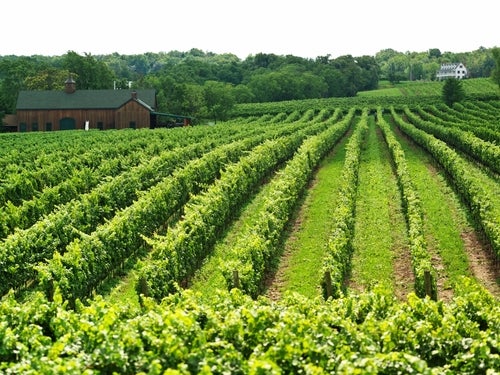
While 2020 will undoubtedly go down in history as the year of Covid-19 (or, alas, the first year of Covid-19), it has left other tragic marks. In late September the Glass Fire tore through the northern section of the Napa Valley and parts of Sonoma, wreaking havoc on vineyards, wineries, houses, restaurants, and other establishments. I was sad to read of the damage to producers such as Newton Vineyard, Sterling Vineyards, Behrens Family Winery, Burgess Cellars, Hourglass Winery, and others. But what tore most at my heart was the razing to the ground of much of the beautiful resort of Meadowood, hidden in its side-valley off the Silverado Trail near St Helena—including Chris Kostow’s garlanded restaurant and the more homely grill. I’ve been lucky enough to stay at Meadowood on a number of occasions. What I’ve always loved about it is its closeness to nature, the way the clapperboard cottages nestle in among the woodpecker-haunted live-oaks, madrones, and mossy boulders. Now nature seems to have turned against it, or against us all.
Meadowood historically was not a luxury resort but a sleepy country club which also served as a meeting-place for Napa residents and vintners. When Bill Harlan and partners bought it in 1979 he had the idea—partly seeded by Robert Mondavi—of making it into a common ground for the Napa Valley, and the site for the annual Auction Napa Valley. This has become a glitzy event and has raised more than $200 million for charity.
Harlan has said, with typical undauntedness, that he and his partner Stan Kroenke will rebuild Meadowood. Beyond the tragedy and destruction, he told me, he sees “an exciting new chapter. We’ll make it even better than we did 36 years ago.”
My personal hope is that the new chapter may in some ways look back to the past. In Napa the glitziness has sometimes obscured the essence. That essence for me is the astonishing natural beauty, a talented and resilient community, the commitment to agriculture enshrined in the 1968 Ag Preserve, and the classic wines this most prestigious of American wine appellations has produced, especially from Cabernet Sauvignon, for 150 years and more. Gastronomy and hospitality have grown naturally and organically out of all that.
Napa may be glitzy and a haunt of celebrities, but its most famous wine is arguably out of fashion. Certainly, if you base your polling on sommeliers, Napa Cabernet is seen as old hat, or unexciting, or too “big” or “heavy.” Pinot Noir has long been the cynosure; then Barolo and Barbaresco acquired Burgundian allure. Poor old Cabernet Sauvignon got left behind. (Of course, there are exceptions.)
The civilized and the wild
Here I want to talk about the essence of Napa Cabernet. I somehow feel this was better understood a few decades ago. Early enthusiasts and evangelists included Hugh Johnson, who used his poetic pen to sum up the elusive character of “Rutherford dust” in the first edition of The World Atlas of Wine (1971), and, perhaps surprisingly, Michael Broadbent. Steven Spurrier hosted his famous Judgement of Paris tasting—in which California wiped the floor with France—in 1976 when perhaps more by accident than design the wines were not as extremely ripe and high in alcohol as some later became.
In the earlier days I don’t believe that sheer power and heft were the prime hallmarks of Napa Cabernet. Researching a book on Cabernet Sauvignon in the late 1980s I spoke to Andre Tchelistcheff, the undisputed dean of Napa Cab and maker of the great Beaulieu Vineyards Georges de Latour Private Reserves of the 1940s, ’50s, and ’60s; I remember that he stressed balance and elegance above power. Certainly those were qualities not just of his wines but of others such as Inglenook.
The best Napa Cabernets are of course quite powerful wines, the product of unfailingly ripe grapes, often weighing in at more than 14.5% ABV. But alcohol levels in Bordeaux over the past five or six very warm vintages have been similar. It’s also the case that the Cabernet harvest in Napa, especially on the hillsides, often extends well into the second half of October or even November—so these are later-ripened grapes than the Cabernets of the Médoc. What’s even more important to my mind is that the classic Napa Cabs have always been graceful as well as powerful. Gracefulness translates into drinkability, whereas sheer power may win points but not true friends.
I remember drinking two fine Napa Cabernets from the 1978 vintage with Bill Harlan and Robin Lail some time in 2008. One was a Joseph Phelps, the other from Stags Leap Wine Cellars. What I recall was nothing big or bold or brash, but a lovely and linear fruit purity, enveloped in warmth. The wines seemed to reflect the landscape of the Napa Valley itself; a kind of North American idyll, grand but also gentle, with Mediterranean echoes. Civilized, even classical, but with haunting notes of the wild.
I’ve been speaking in very general terms about Napa Cab, but of course there is quite a bit of variety, reflecting topography and geology. In particular there are distinctions between valley-floor wines and hillside wines, between sedimentary and volcanic soils, between different subzones. More concentration, complexity, and character are to be found in wines from hillside vineyards, most would agree; certainly that is Bill Harlan’s strong conviction. Hillsides bring deeper, darker, more mysterious overtones. What makes the greatest Napa Cabernets so special, to my mind, is the perfect balance of the civilized and the wild.






